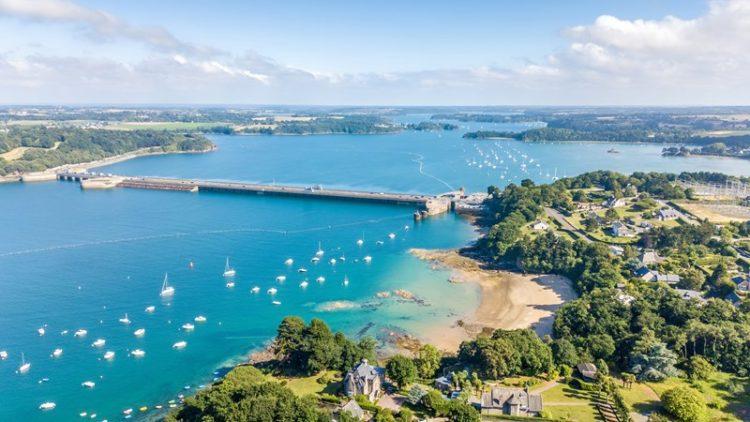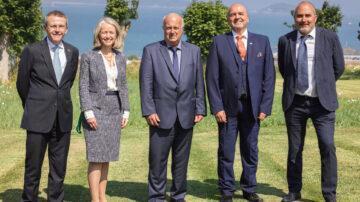In 2017 Guernsey Electricity met 33% of the island’s electricity demand from the Tidal Barrage at the Rance in Brittany, France.
Guernsey Electricity’s agreement with EDF (Électricité de France) allows the supply of 60 MW of electricity per year from France, via Jersey to Guernsey, through an undersea cable named GJ1. In 2017, the cable met 86% of Guernsey Electricity’s demand, with 53% coming from low-carbon nuclear sources generated in Europe and 33% from the Tidal Barrage at the Rance, Brittany. The remaining electricity was generated on island.
The Rance Tidal Power Station, operated by EDF, opened in 1966 as the world’s first tidal power station. It is located on the estuary of the Rance River in Brittany.
Guernsey Electricity’s Head of Asset, Stuart Blondel said: “At Guernsey Electricity we strive to be an active member of the community working to reduce carbon emissions and therefore, core to our activity is planning for increased efficiency and sustainable energy. The GJ1 cable connects us to the European electricity grid and provides access to a secure source of hydroelectricity and low-carbon energy for the island.
‘The GJ1 cable is also complemented by our solar array installation at the power station in Vale earlier this year, which further demonstrates our commitment to the environment. We were delighted as in just 50 days the panels generated enough electricity to light and power seven homes for a year,” added Mr Blondel.
Guernsey Electricity continues to work closely with France as the company investigate a second cable, which will link the island directly to France – named GF1. The proposed cable will help safeguard future power supply to Guernsey and increase the possibility of supplying the entire island with imported low-carbon energy, minimising local generation and therefore, emissions.
In 1998, Guernsey Electricity along with Jersey Electricity developed the Channel Islands Electricity Grid (CIEG) to gain access to hydroelectric power and low-carbon nuclear power generated in Europe















